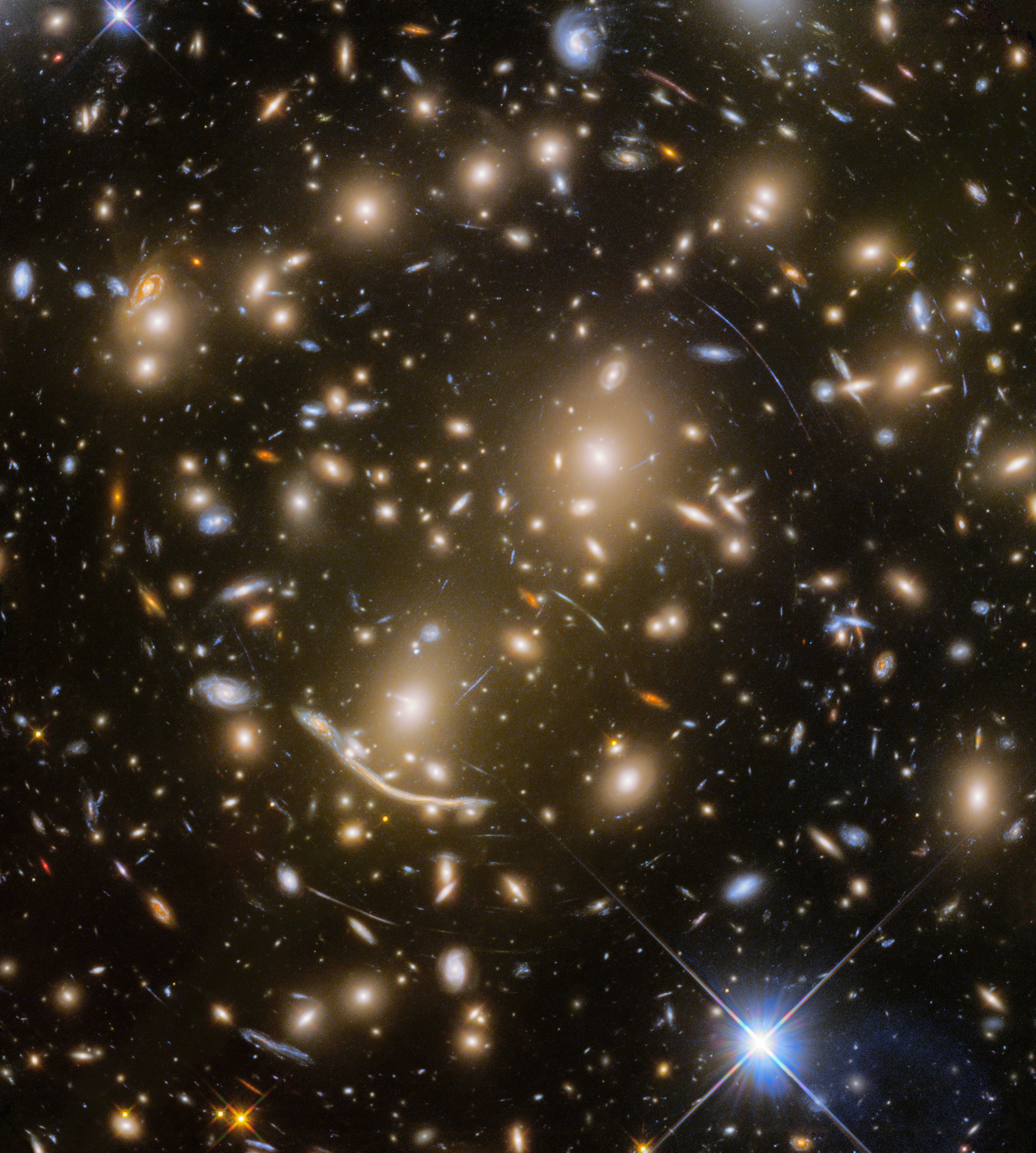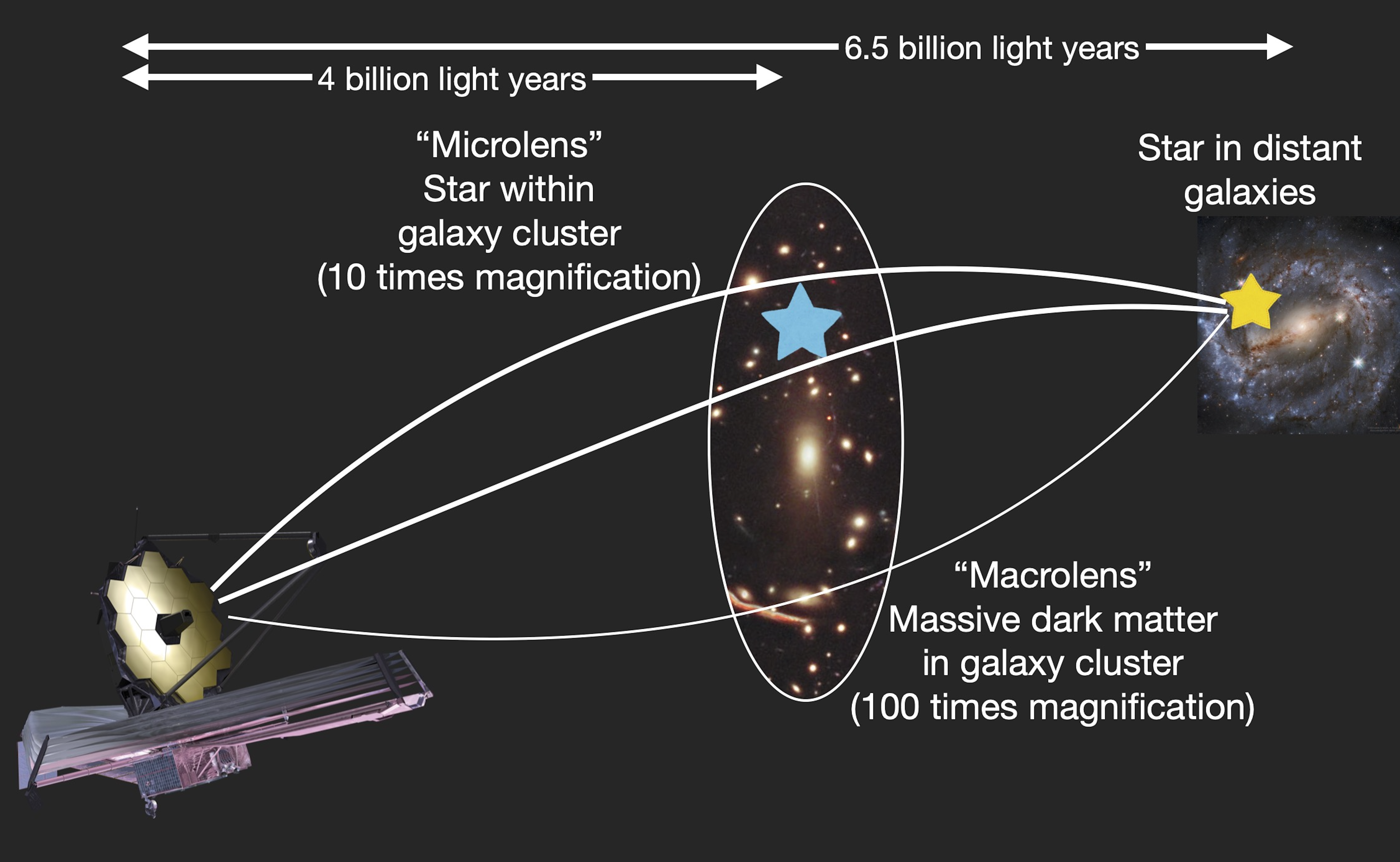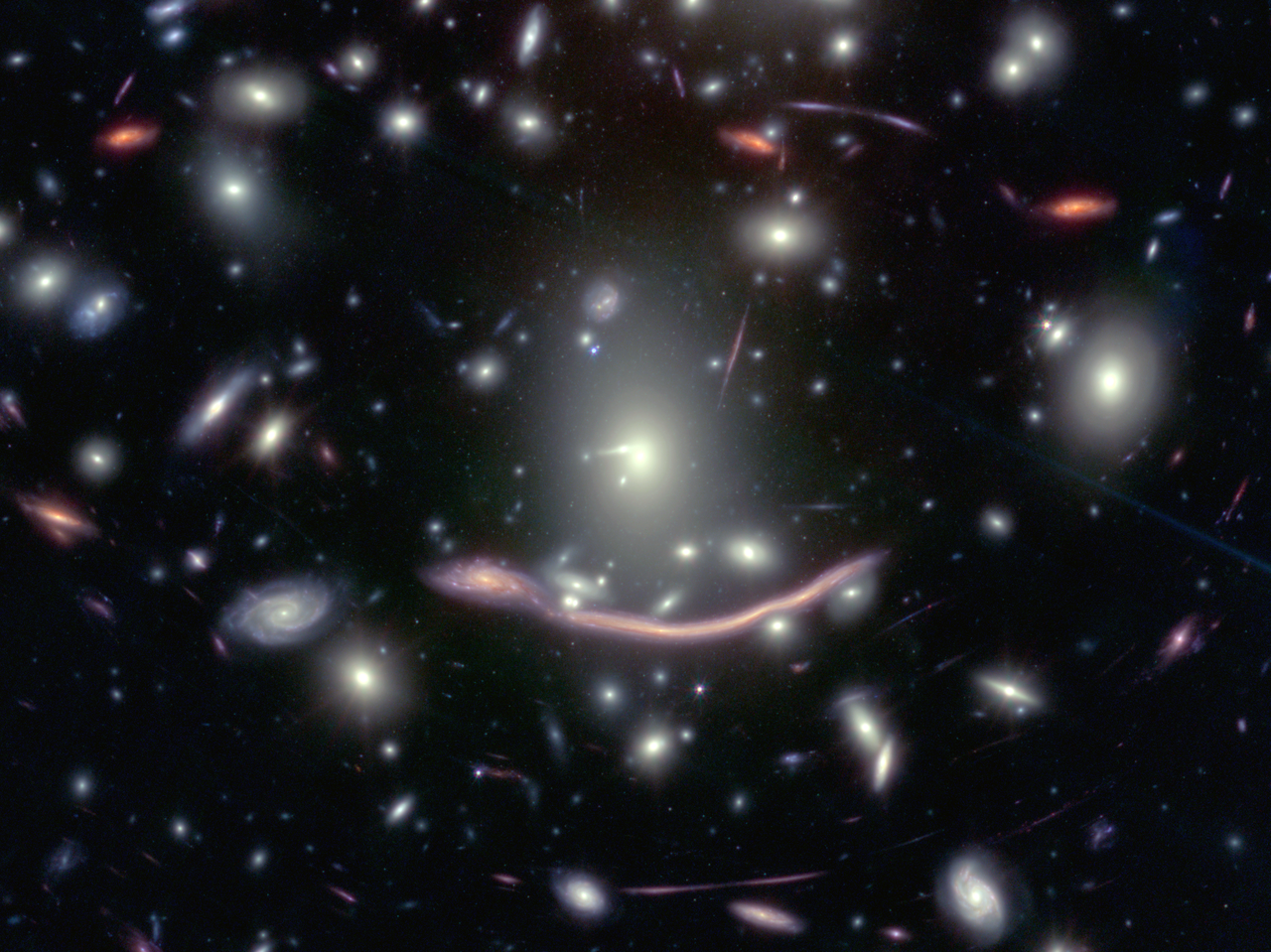Image List
-

Abell 370, a galaxy cluster located nearly 4 billion light-years away from Earth features several arcs of light, including the "Dragon Arc" (lower left of center). These arcs are caused by gravitational lensing: Light from distant galaxies far behind the massive galaxy cluster coming toward Earth is bent around Abell 370 by its massive gravity, resulting in contorted images.
Credit: NASA
-

The massive, yet invisible halo of dark matter of a galaxy cluster works as a "macrolens,", while lone, unbound stars drifting through the cluster act as additional "microlenses, multiplying the factor of magnification.
Credit: Yoshinobu Fudamoto
-

In this zoomed-in detail of the Hubble image of Abell 370, the host galaxy where the 44 stars were discovered appears several times: in a normal image (left), and a distorted image appearing as a drawn-out smear of light.
Credit: NASA